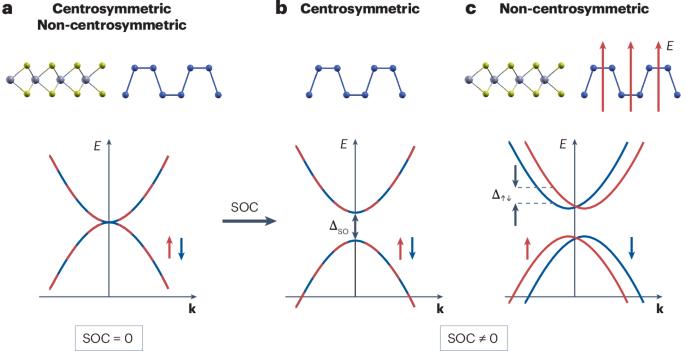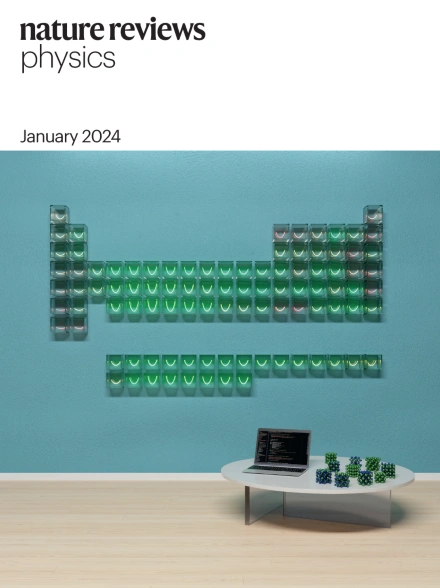First-principles determination of spin–orbit coupling parameters in two-dimensional materials
IF 39.5
1区 物理与天体物理
Q1 PHYSICS, APPLIED
引用次数: 0
Abstract
Spin–orbit coupling (SOC) is fundamental to many phenomena in solid-state physics. Two-dimensional materials and van der Waals heterostructures provide researchers with exquisite control over this interaction; the ability to fine-tune SOC has impacts on spin transport and relaxation, topological states, optoelectronics, magnetization dynamics and even superconductivity and other correlated states. This Technical Review covers both the theoretical methodology and experimentally relevant phenomenology of SOC in 2D materials, by providing essential insights into the process of extracting the spin interactions from the underlying electronic structure obtained from first-principles density functional theory calculations. This Technical Review begins with graphene. Its SOC has a surprisingly complicated origin yet graphene remains the benchmark for other elemental centrosymmetric 2D materials in which SOC leads to a mixing of spin-up and spin-down components of the Bloch states. We then discuss spin–orbit materials, such as transition-metal dichalcogenides, in which strong SOC and the lack of space-inversion symmetry yield large spin splittings of the valence and conduction bands. This enables highly efficient optical spin orientation or robust valley Hall effect in transition-metal dichalcogenides. Next, we give guidelines for extracting the spin–orbit characteristics of van der Waals heterostructures, such as graphene/WSe2, which serve as a platform for SOC engineering. For these representative systems, we highlight the essentials of first-principles-based methodology, including supercell formation, strain artefacts, twisting, gating and lattice relaxation. Finally, we briefly discuss the effects of proximity exchange coupling, which is another relevant spin interaction for spintronics. This Technical Review demonstrates how first-principles calculations and effective modelling provide realistic insights into spin–orbit interactions and their engineering in 2D materials and van der Waals heterostructures.

二维材料中自旋-轨道耦合参数的第一性原理测定
自旋轨道耦合(SOC)是固态物理中许多现象的基础。二维材料和范德华异质结构为研究人员提供了对这种相互作用的精细控制;微调SOC的能力对自旋输运和弛豫、拓扑态、光电子学、磁化动力学甚至超导性和其他相关态都有影响。本技术综述涵盖了二维材料中SOC的理论方法和实验相关现象学,提供了从第一性原理密度泛函理论计算中获得的潜在电子结构中提取自旋相互作用过程的基本见解。本技术回顾从石墨烯开始。它的SOC有着令人惊讶的复杂起源,但石墨烯仍然是其他元素中心对称二维材料的基准,其中SOC导致布洛赫态的自旋向上和自旋向下混合。然后我们讨论了自旋轨道材料,如过渡金属二硫族化合物,其中强SOC和缺乏空间反演对称性导致价带和导带的大自旋分裂。这使得过渡金属二硫族化合物具有高效的光学自旋取向或强大的谷霍尔效应。接下来,我们给出了范德华异质结构(如石墨烯/WSe2)的自旋轨道特征提取指南,为SOC工程提供了平台。对于这些代表性系统,我们强调了基于第一性原理的方法的要点,包括超级单体形成,应变伪影,扭曲,门控和晶格松弛。最后,我们简要讨论了自旋电子学中另一种相关的自旋相互作用——邻近交换耦合的影响。本技术评论展示了第一性原理计算和有效的建模如何为自旋轨道相互作用及其在二维材料和范德华异质结构中的工程提供现实的见解。
本文章由计算机程序翻译,如有差异,请以英文原文为准。
求助全文
约1分钟内获得全文
求助全文
来源期刊

Nature Reviews Physics
Multiple-
CiteScore
47.80
自引率
0.50%
发文量
122
期刊介绍:
Nature Reviews Physics is an online-only reviews journal, part of the Nature Reviews portfolio of journals. It publishes high-quality technical reference, review, and commentary articles in all areas of fundamental and applied physics. The journal offers a range of content types, including Reviews, Perspectives, Roadmaps, Technical Reviews, Expert Recommendations, Comments, Editorials, Research Highlights, Features, and News & Views, which cover significant advances in the field and topical issues. Nature Reviews Physics is published monthly from January 2019 and does not have external, academic editors. Instead, all editorial decisions are made by a dedicated team of full-time professional editors.
 求助内容:
求助内容: 应助结果提醒方式:
应助结果提醒方式:


